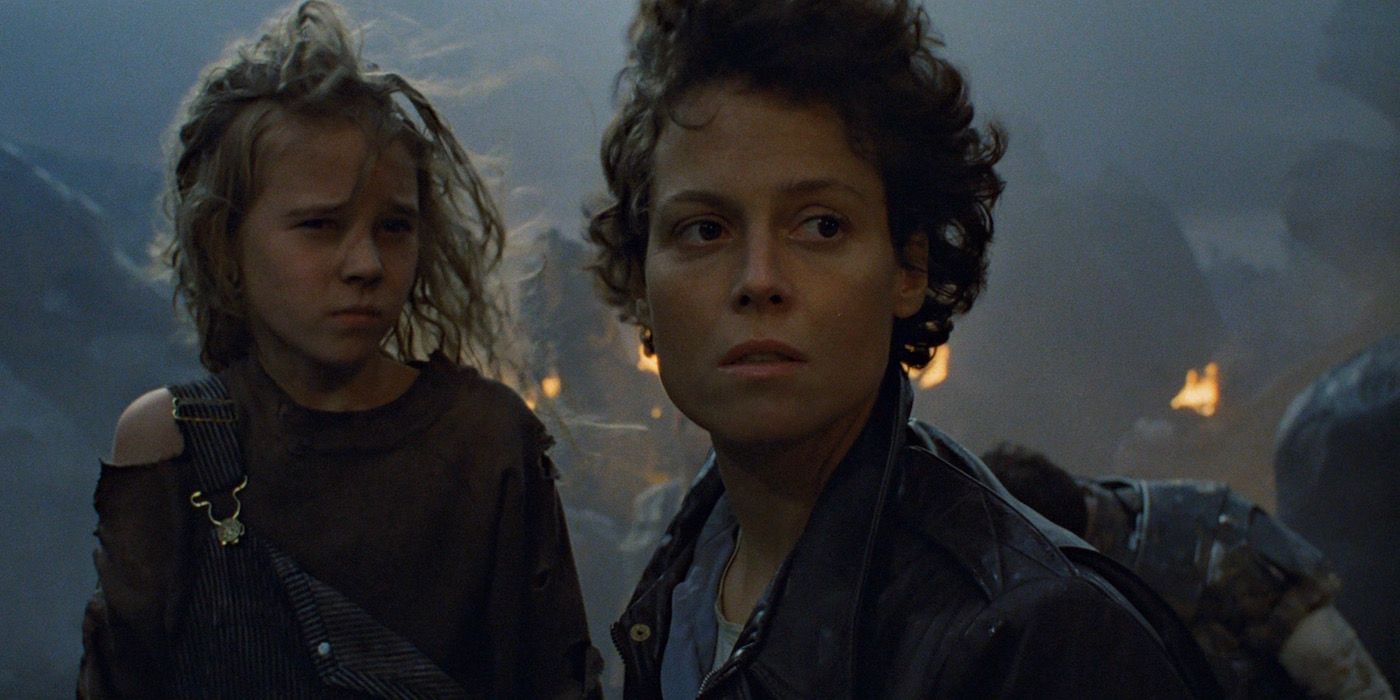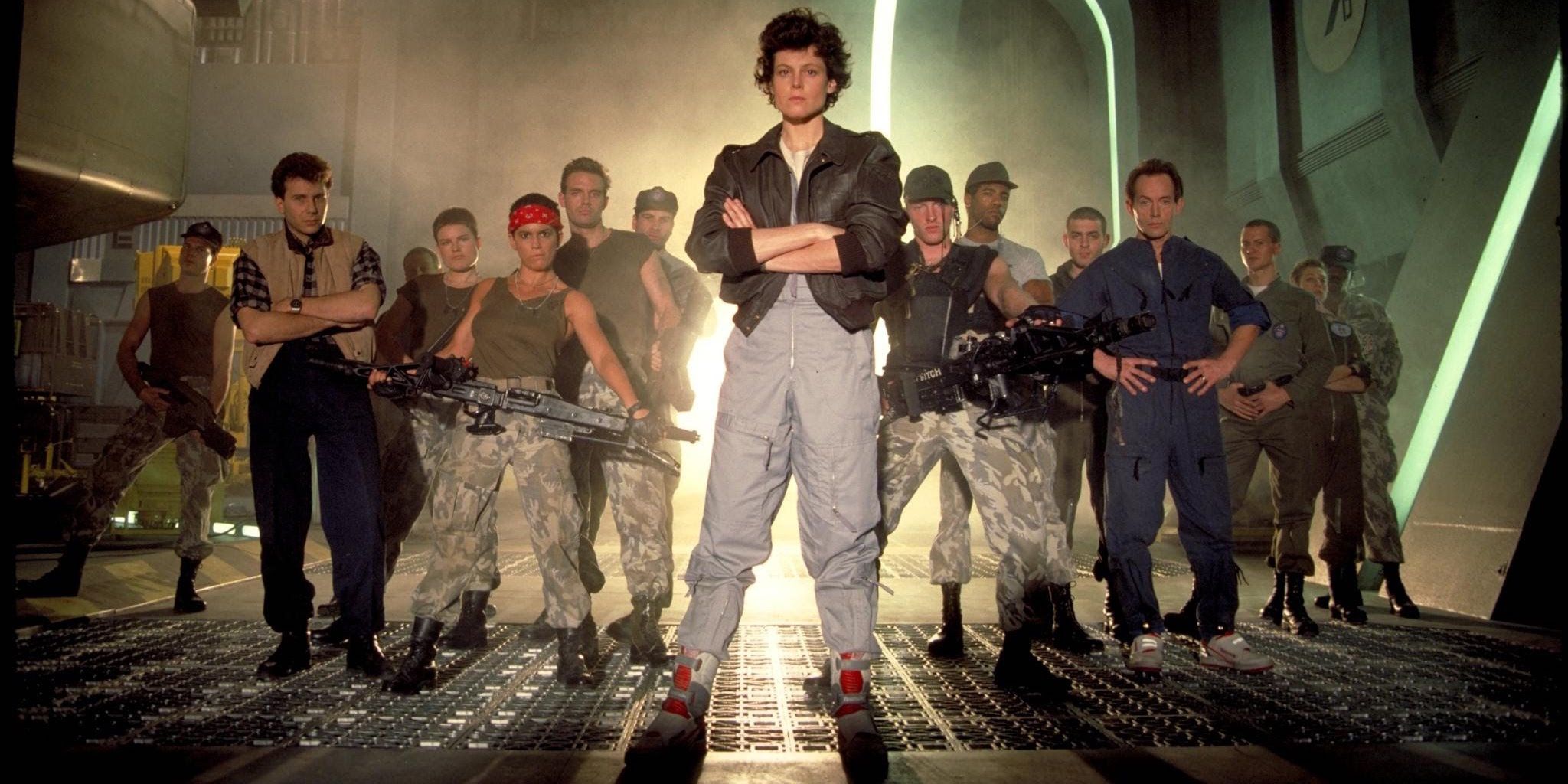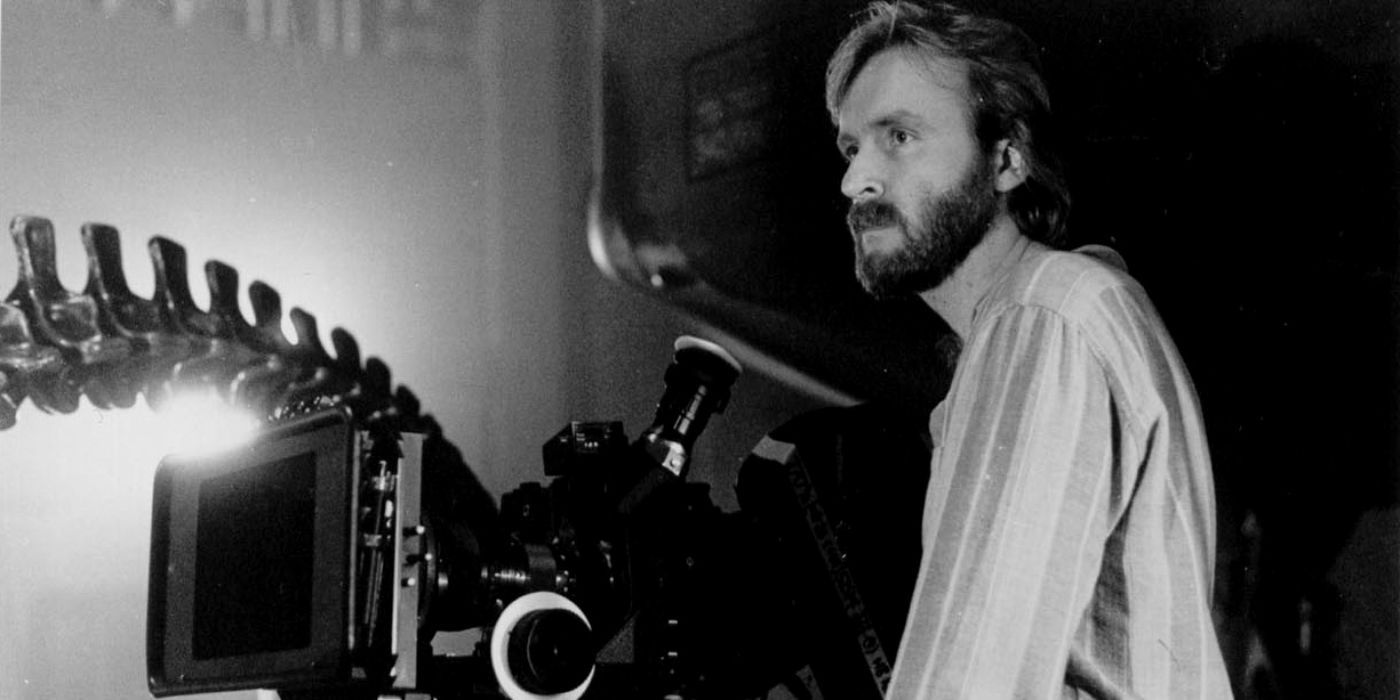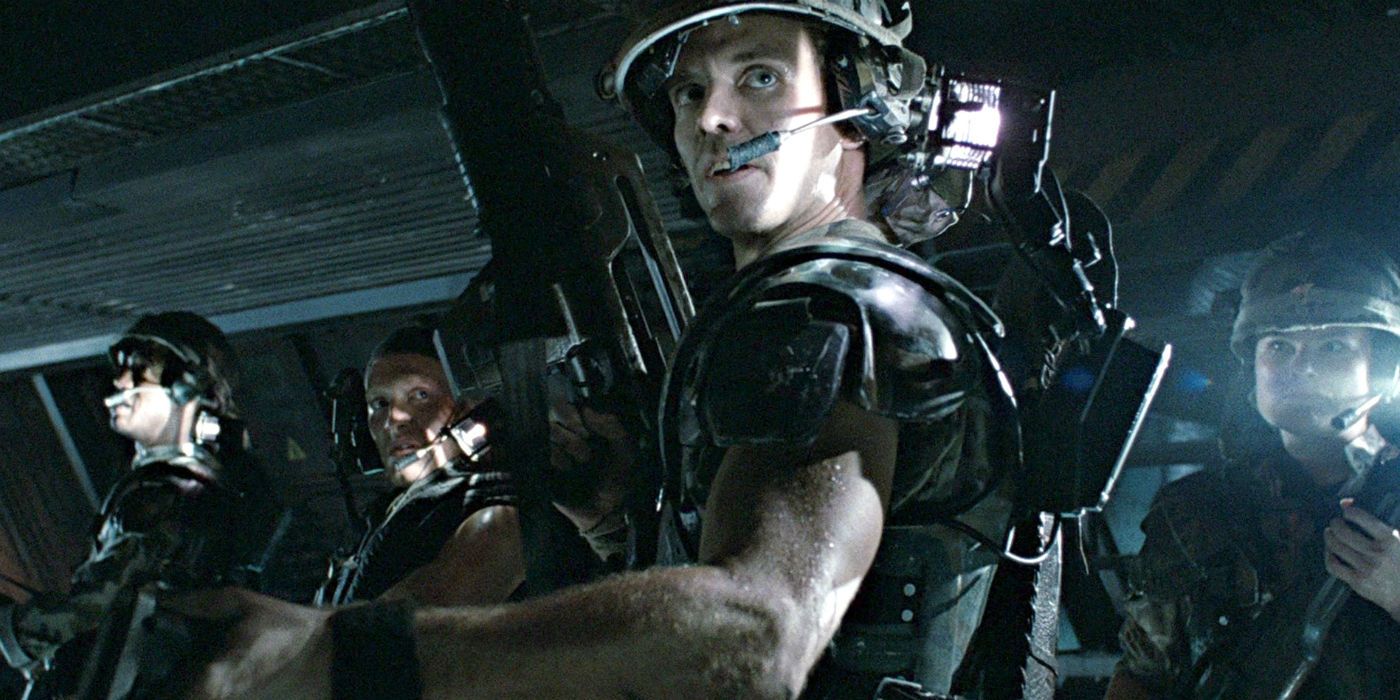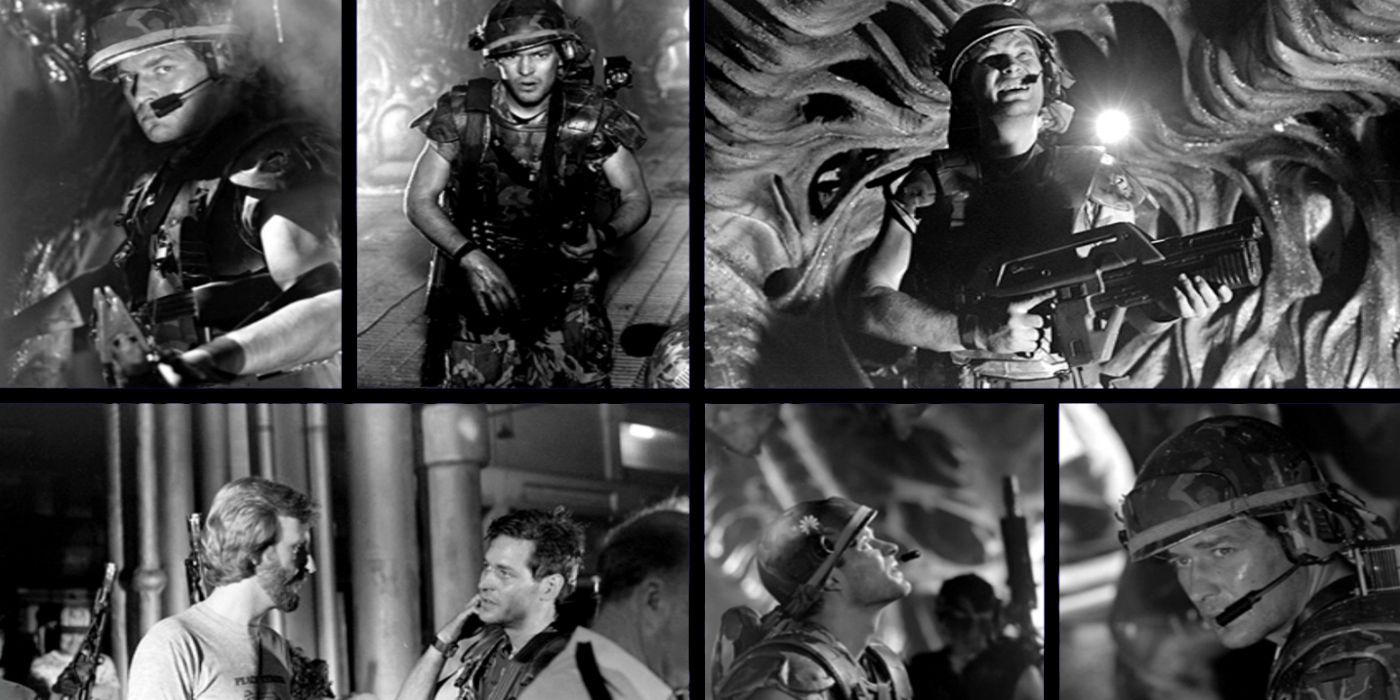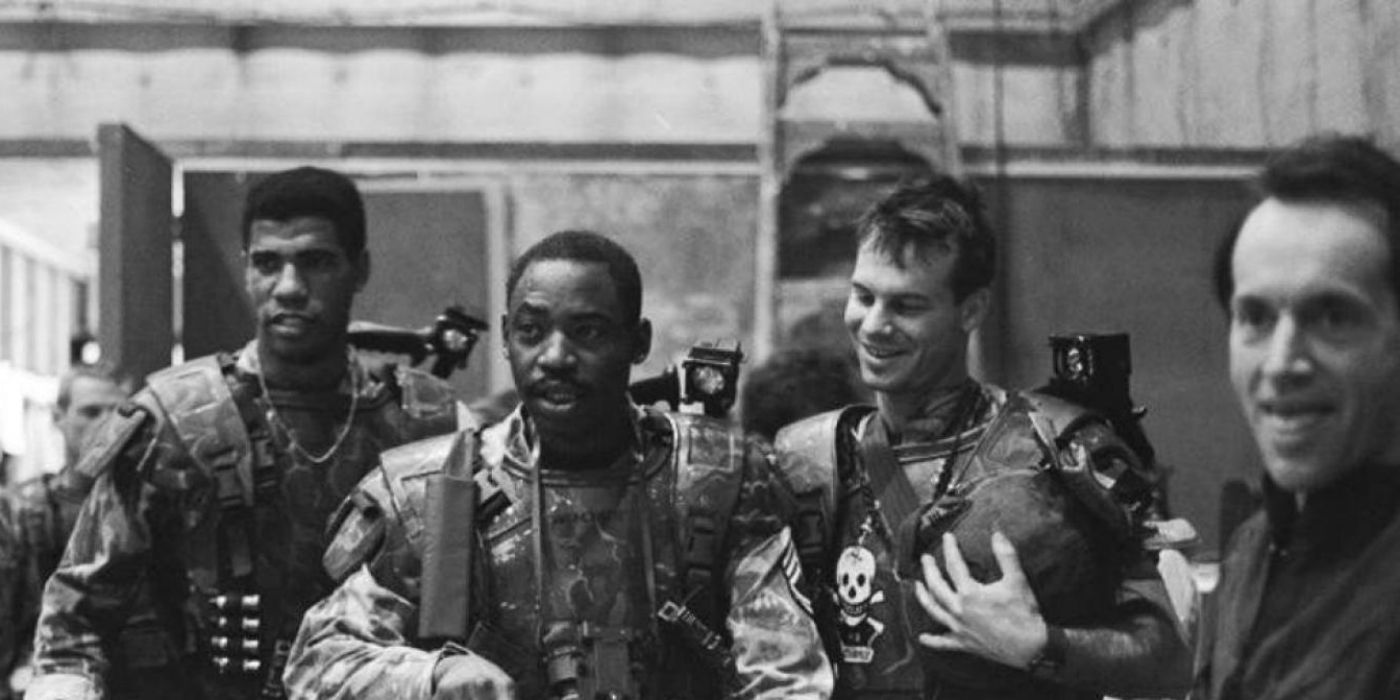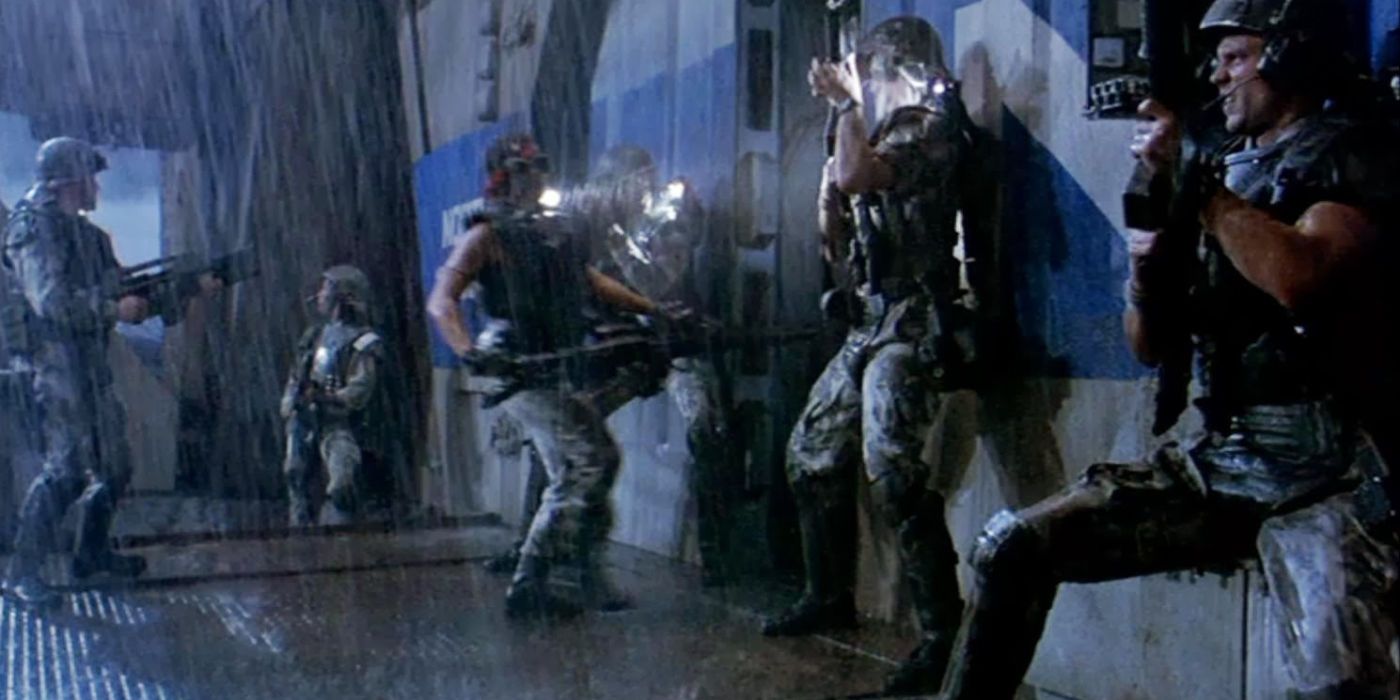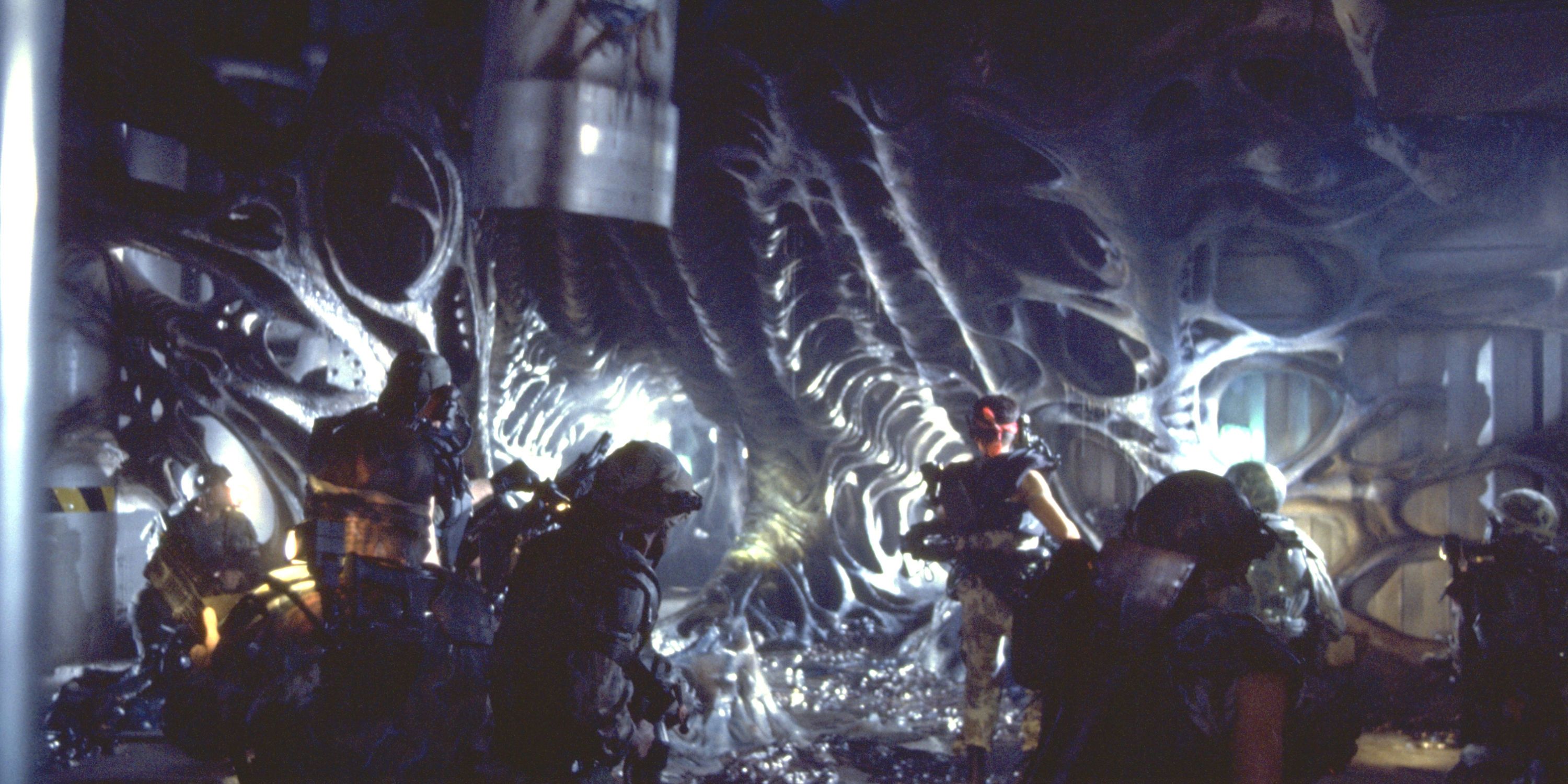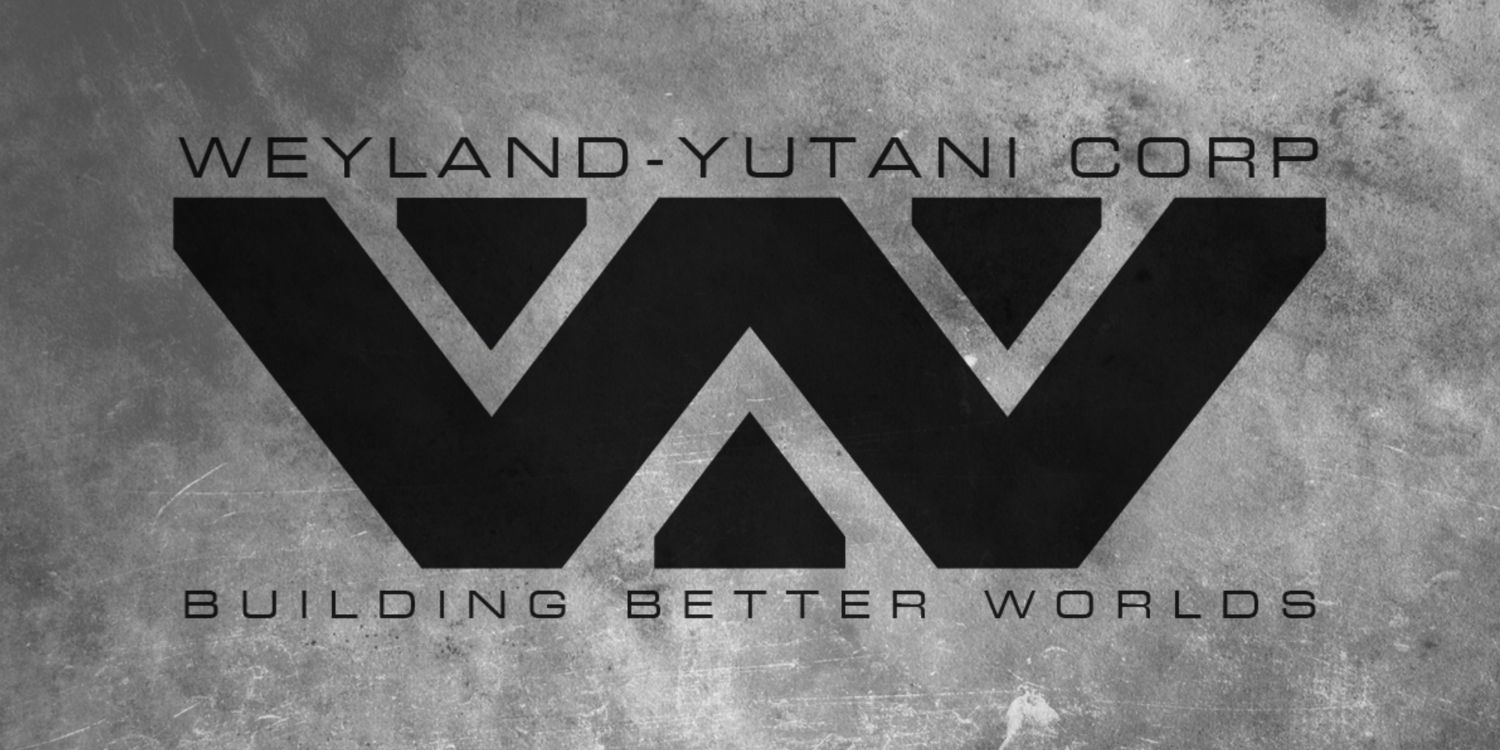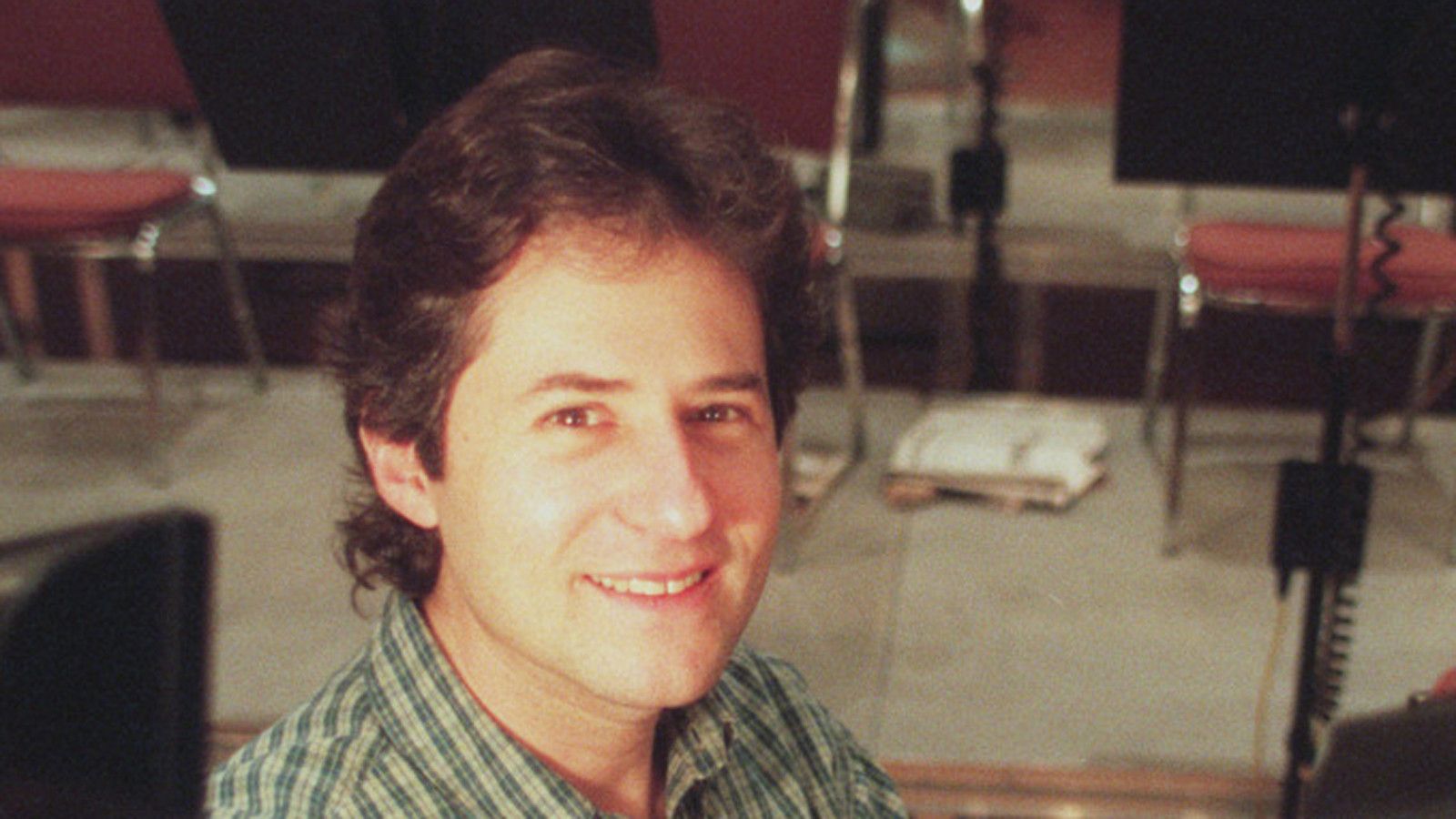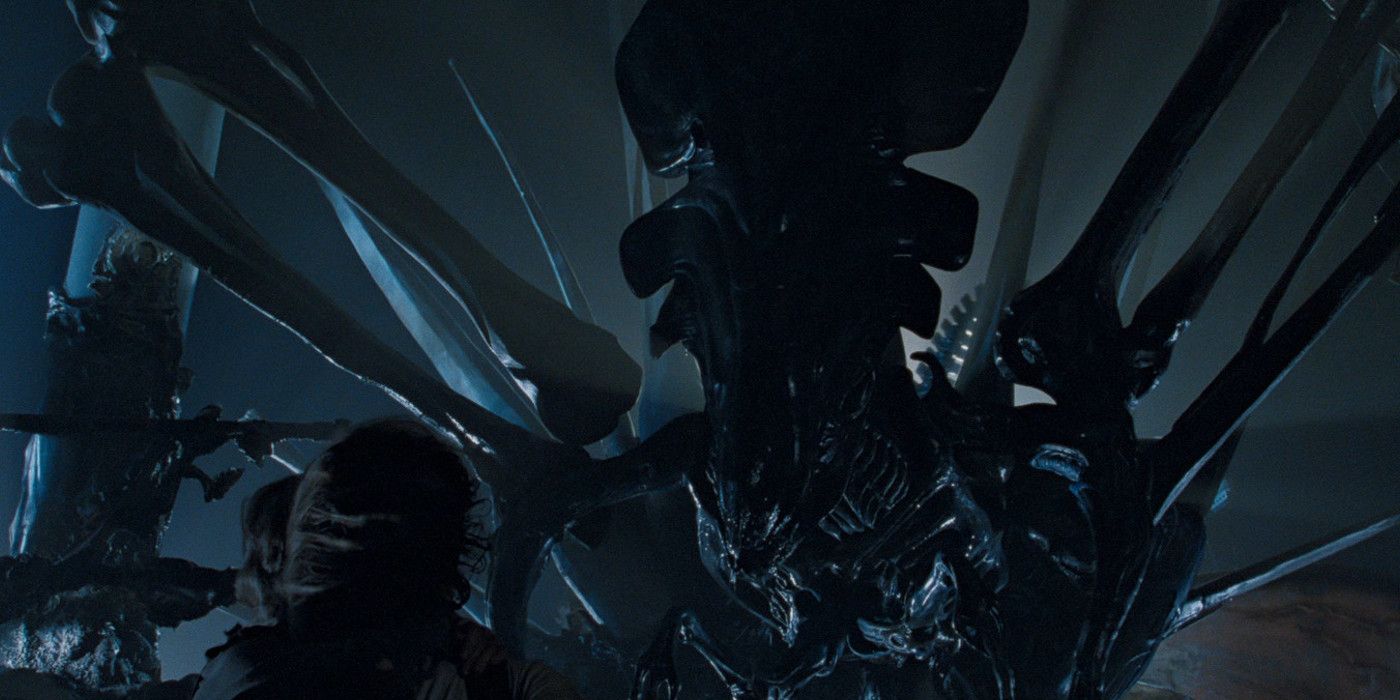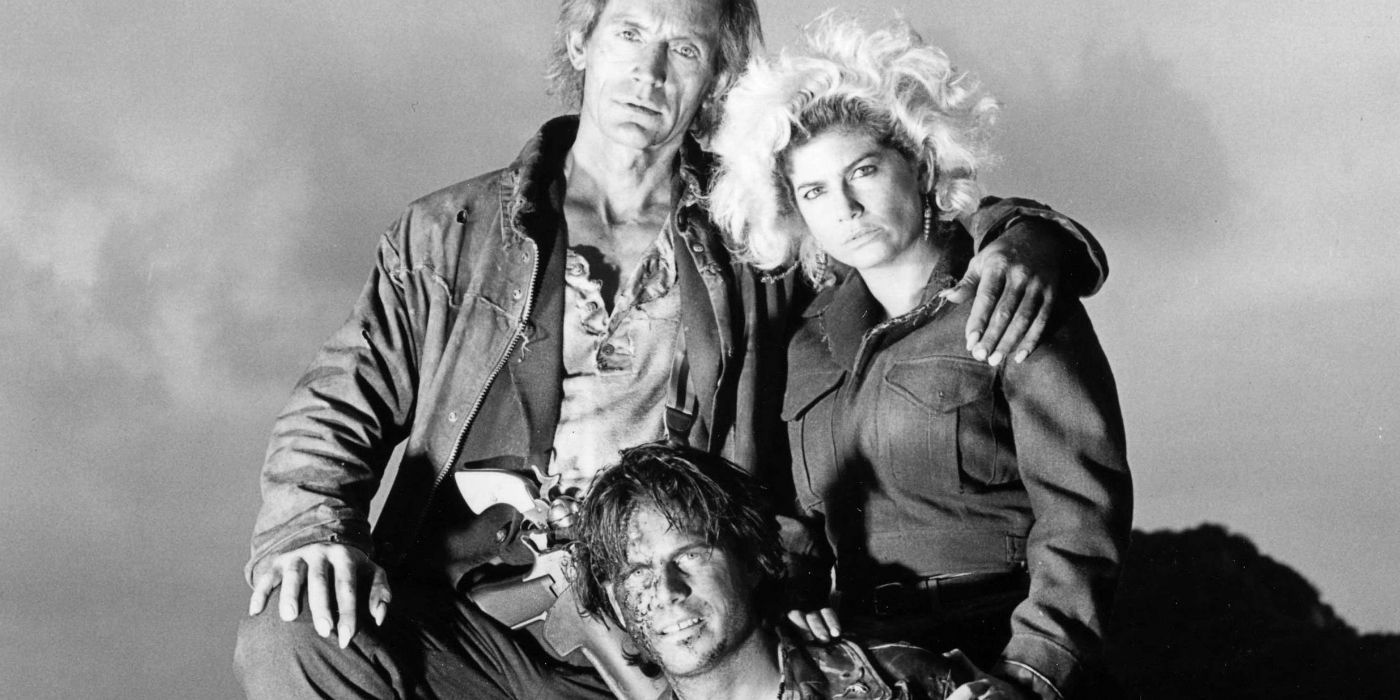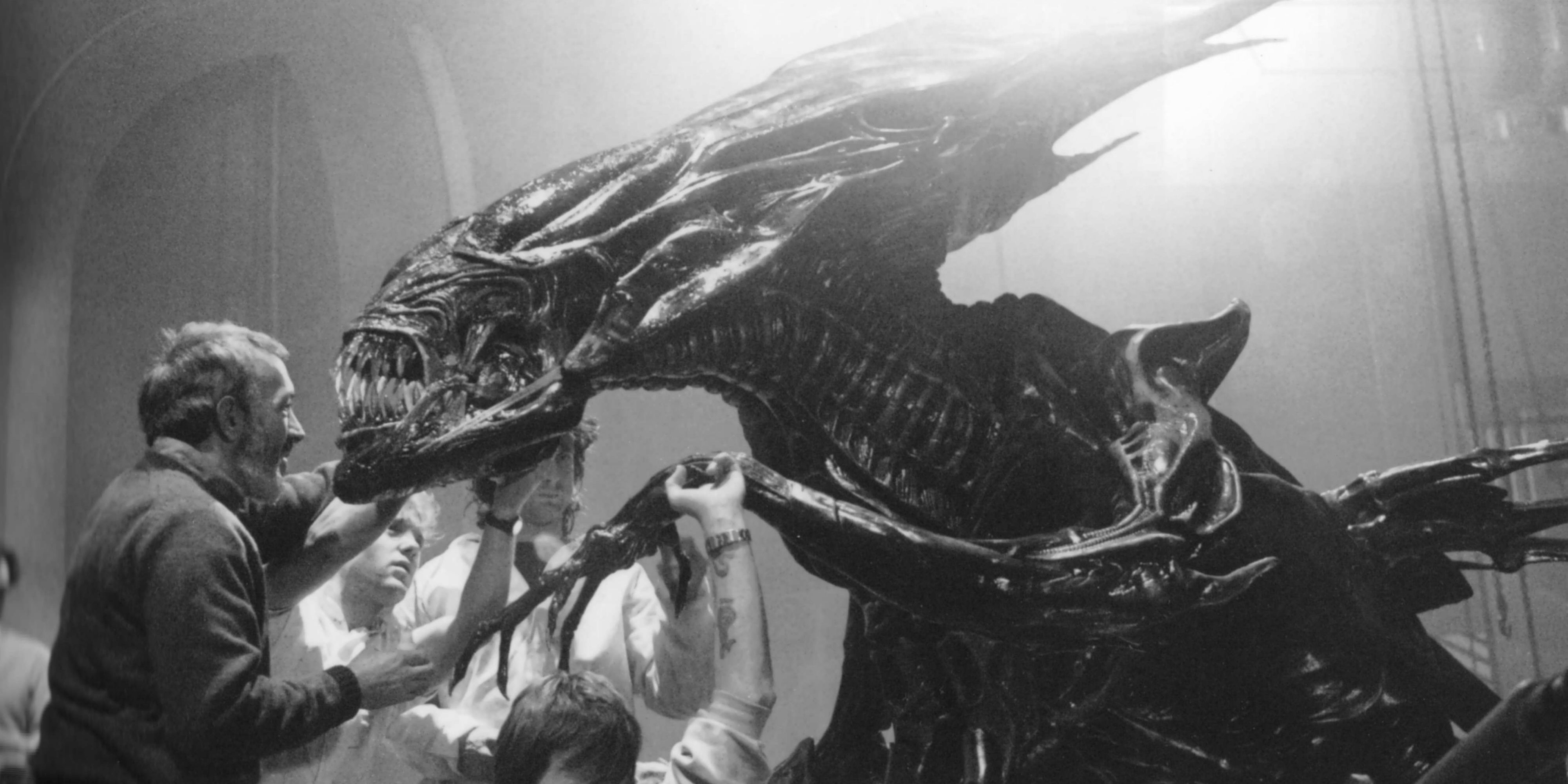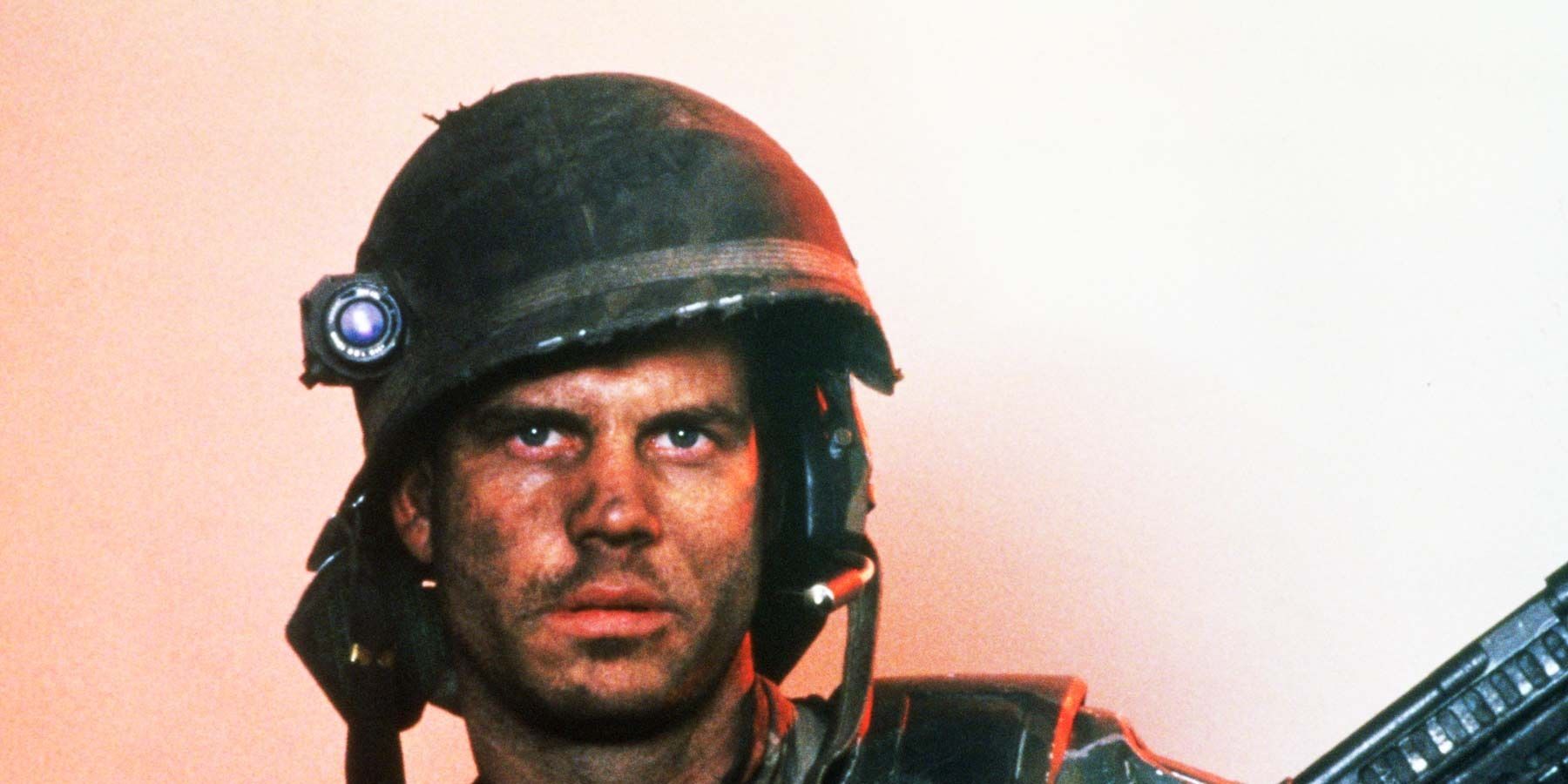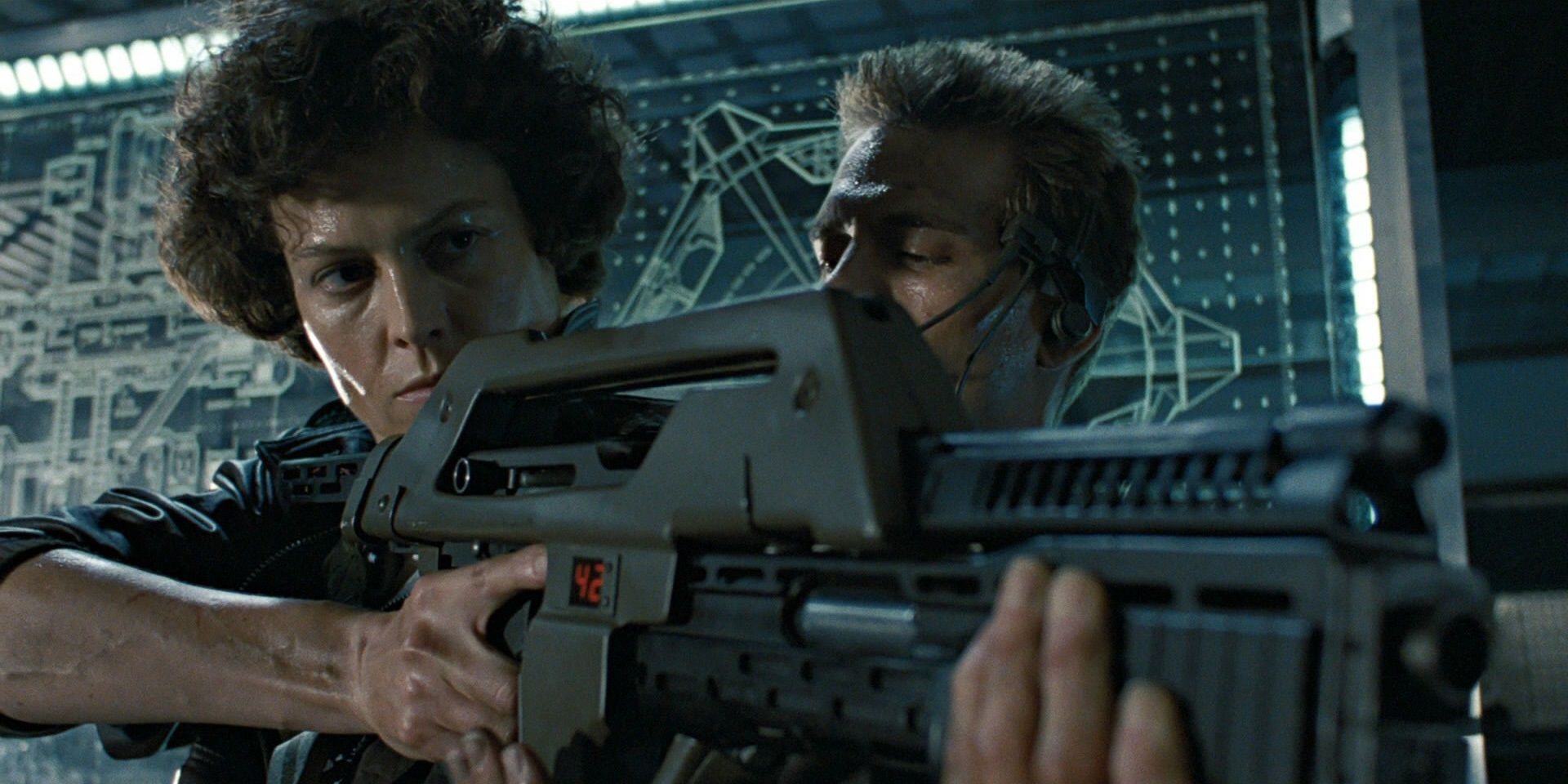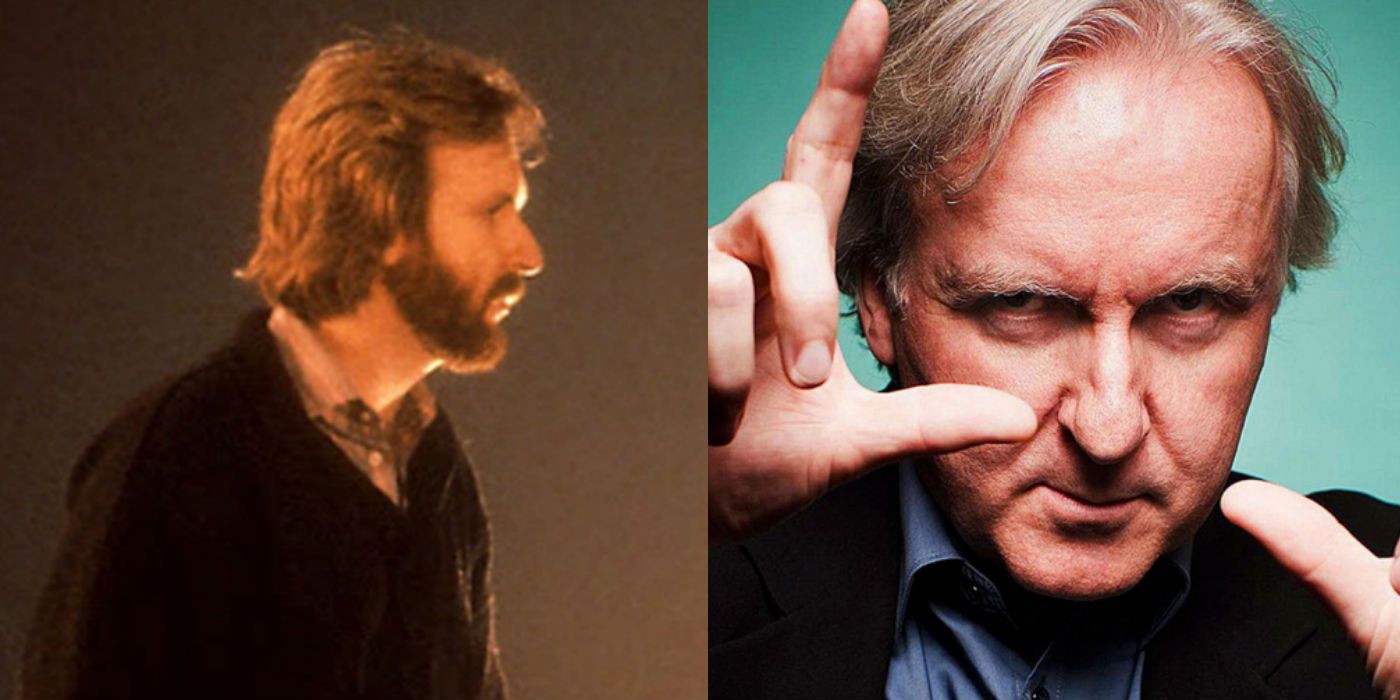In 1979, Ridley Scott terrified movie-goers with his seminal science fiction masterpiece, Alien. Widely regarded as one of the best science fiction horror films of all time, audiences were left quivering on the edges of their seats as one of the most unique and horrifying movie monsters stalked the helpless crew of the Nostromo.
Audiences watched with bated breath as the last surviving member of her crew, Ellen Ripley, bested the terrifying creature, ending the brooding and atmospheric film with a glimmer of hope that she will be rescued after her terrible ordeal.
After constructing a world so filled with dread with characters who were instantly recognizable, it would seem foolish to not pursue potential sequels. Fans would have to wait seven years for the first sequel would hit theaters, although if it weren’t for the return of Sigourney Weaver and the titular creature, some might not have noticed it was a sequel at all.
Written and directed by a then-unknown James Cameron, Aliens was a bold step in a new direction. Instead of simply rehashing the original film, Cameron took the terror and tension of the first film and added heart pounding thrills. The result was a film that is consistently called one of the best action movies of all time.
Released on July 18th, 1986, Aliens is about to mark its 30th anniversary. In celebration we are counting down 15 things you didn’t know about this beloved sequel. With rumors of Neill Blomkamp's long gestating Alien 5 being a direct sequel to Aliens, there's no better time to revisit this classic. Be warned, there are some minor spoilers ahead, so if you haven’t seen Aliens, stop reading this and go watch it right now.
15. James Cameron says, "I'll be back"
James Cameron was hired by 20th Century Fox to write a treatment for a sequel to Alien based on the strength of his script for The Terminator, which was in pre-production at the time. Cameron came up with an outline for the film which he simply called Alien II. The studio execs weren’t exactly over the moon with this outline, and the idea of pursuing a sequel at that time fizzled out. Meanwhile, Cameron was about to start shooting The Terminator with Arnold Schwarzenegger only to find out that production was going to be delayed for nine months, as Schwarzenegger needed to film Conan The Destroyer.
This delay was the catalyst that drove Cameron back to the Alien sequel. With more time, Cameron was able to flesh out his ideas into a 90 page screenplay, roughly three quarters of the movie, which the big-shots at Fox loved. Unfortunately Cameron had to postpone finishing the script as he was set to start production on The Terminator, but Fox agreed to wait for Cameron to finish The Terminator so that he could finish drafting his vision for the Alien sequel. Fox’s decision was fairly surprising, since Cameron’s only film credit at that point was Piranha 2: The Spawning, a B-movie about killer piranha fish that grow wings and terrorize people by both sea and air.
14. Sigourney's Big Pay Day
Sigourney Weaver was extremely reluctant to reprise her role as Ripley, fearing that the character would be poorly written and would ultimately tarnish the legacy of the first film. She had turned down numerous offers to do a sequel until she had read James Cameron’s script. Weaver was receptive to the way Ripley was portrayed, and especially liked the mother-daughter bond between her and Newt. With Weaver finally on board, it was just a matter of sorting out her contract before the production could begin, which dragged on for quite some time.
The executives at Fox attempted to convince Cameron to write a treatment of the film that didn’t include Ripley, in case the negotiations didn’t pan out. Cameron refused, stating that the Alien series was “all about Ripley.” This gave Sigourney Weaver’s agent a significant advantage during the contract negotiations, and eventually resulted in a $1 million payday in addition to a percentage of the profits. Quite an improvement over the $35,000 she was paid to appear in the original film. Most would argue that it was money well spent, as Weaver’s portrayal of Ripley was met with near universal acclaim, even earning Weaver a Best Actress Oscar nomination, the first time a female actress had been nominated for an action role.
13. "Absolutely badasses!"
To portray the Colonial Marines as an efficient, highly trained military unit, the actors spent two weeks training with the Special Air Service, a special forces unit of the British military. The SAS undertakes a variety of roles including covert reconnaissance, counter-terrorism, hostage rescue, and intelligence gathering, among other things. This makes Sergeant Apone’s declaration of the marines being “absolutely badasses” particularly accurate. Paul Reiser, Sigourney Weaver and William Hope, who portrayed Burke, Ripley and Gorman, respectively, did not join them during their training. This was done specifically, as Burke, Ripley and Gorman are new additions to the squad, and the marines were written to be openly hostile towards them.
It should also be noted that actor Al Matthews, who portrayed Sergeant Apone actually had a military background prior to filming. During the Vietnam War he was the first black marine to be promoted to the rank of Sergeant. Matthews would later say that he got the part in Aliens not due to his acting ability, but rather his military service record.
12. A Last Minute Replacement
Principal photography for Aliens was well underway when James Cameron was forced to make a significant casting change. The heroic Corporal Dwayne Hicks was originally played by James Remar before being replaced by one of Cameron’s go-to guys, Michael Biehn, who the director had previously worked with in The Terminator. For a long time the story behind the Remar’s dismissal from the film was that he and Cameron butted heads over “artistic differences”, the details of which were vague.
In an interview with the Sidebar podcast, James Remar stated that the actual reason he was fired was because he was arrested for drug possession. The actor admits that at the time Aliens was shooting, he was struggling with drug dependence, and the production simply couldn’t afford any delays that might have occurred due to his legal issues, and he was fired. Producer Gale Anne Hurd called Michael Biehn from London on a Friday to ask him if he wanted the part and on the following Monday, Biehn was on the Aliens set. Although almost all of the scenes that Remar had shot had to be re-shot with Biehn, Remar does still appear in the final cut of the film, although you can’t tell it’s him as his back is to the audience.
11. Cameron had the actors playing the Marines decorate their own fatigues
It is common for movies to shoot scenes out of order; in the case of Aliens, the scenes in which we are introduced to the Colonial Marines were among the last to be shot. Director James Cameron did this intentionally, as he felt the actors would have developed a camaraderie and rapport with each other over the duration of the shoot, which would lend credence to the illusion that these men and women had been serving together for a long period of time.
For added realism, Cameron also encouraged the actors playing the marines to decorate the battle armor that they wear in the film themselves, much like soldiers in Vietnam did. Bill Paxton, who plays Private Hudson has “Louise” scrawled on his in reference to his wife. Cynthia Dale Scott, who portrayed Corporal Dietrich, has “Blue Angel” written on her helmet, a reference to the actress Marlene Dietrich in 1930’s Blue Angel. Jenette Goldstein, who plays Vasquez, has “El riesgo siempre vive” on her chest armor, which is Spanish for “risk always lives”.
Michael Biehn, who replaced James Remar as Hicks while shooting was already underway, did not have a chance to decorate his own fatigues. Biehn was stuck with Remar's gear. Remar had adorned his chest plate with a heart and padlock, something Biehn hated as he likened it to having a bullseye on his chest.
10. Vietnam War Allegory
It’s pretty common for audiences to look into the underlying messages and meanings of their favorite films, and for a long time fans of Aliens had the suspicion that the film was actually a metaphor for the Vietnam War, which had only ended a decade before the film’s release. With 2003’s Quadrilogy boxset, it was finally confirmed that Aliens drew a lot of inspiration from the Vietnam War. Most obvious is the fact that the Colonial Marines in the film are a technologically superior force who gets their butts kicked by an enemy they initially believe to be inferior, mirroring the reality US troops faced when fighting the Viet Cong.
Aliens also features a super shady corporation in Weyland Yutani, who employs the marines to protect their interests by any means necessary, which is similar to the theory that the United States engaged in the Vietnam War not so much to prevent communism, but for more financially motivated reasons. Of course, we can’t forget the inept and irresponsible leaders like corporate stooge Carter Burke and newbie elitist Lt. Gorman, who do everything in their power to somehow make the situation even worse. This was probably inspired by the popular theory that American officers in Vietnam didn’t have a clue what to do, and sent a lot of young men to die without ever getting their own hands dirty.
9. A creepy discovery
The scenes involving the Alien nest deep in the sub-basements of the LV-426 colony were filmed in a defunct power station in London called Acton Lane. The station had closed up shop in 1983, and it’s industrial interior was exactly the look director James Cameron was going for. The decommissioned power station was then transformed into the alien hive, complete with the biomechanical “resin”, alien eggs and the unfortunate cocooned colonists embedded into the walls. When production wrapped no one seemed to think it was necessary for the set dressing to be stripped down, so they were simply left there, a complete alien nest behind the walls of an innocuous power station.
It stayed like that for a number of years until Tim Burton’s 1989 film Batman opened the doors to Acton Lane in order to use the interior as the film's Axis Chemical building, where Jack Nicholson falls into a vat of goop and emerges as the Joker. The Batman crew found most of the Alien hive preserved, making what we can only imagine to be an unsettling first day at work.
8. "The Company" revealed
Despite a brief, blink-and-you’ll-miss-it reference in the original 1979 film, the special edition of Aliens is the first time “The Company” is named as Weyland-Yutani. The name and logo of the company appears on various equipment during the scenes on Hadley’s Hope before the alien infestation occurs. The origin of the enigmatic company’s name has been the subject of debate for years, with one popular theory postulating that director Ridley Scott named the contemptible company after his neighbors who he did not get along with. In reality, Ron Cobb, one of the set and costume designers for the original Alien, came up with the name:
“One of the things I enjoyed most about Alien was its subtle satirical content. Science fiction films offer golden opportunities to throw in little scraps of information that suggest enormous changes in the world. There's a certain potency in those kinds of remarks. Weylan Yutani for instance is almost a joke, but not quite. I wanted to imply that poor old England is back on its feet and has united with the Japanese, who have taken over the building of spaceships the same way they have now with cars and supertankers. In coming up with a strange company name I thought of British Leyland and Toyota, but we couldn't use "Leyland-Toyota" in the film. Changing one letter gave me "Weyland", and "Yutani" was a Japanese neighbor of mine.”
7. The Oscar nominated score was written overnight
Composer James Horner thought he would have six weeks to write the score for Aliens. However when he arrived in England, he found out that filming hadn’t even wrapped yet, meaning that he would have to wait until editing was done in order to write appropriate music to accompany what was going to be shown on screen. Horner had to wait an additional three weeks before he could begin his work, and found himself working overnight in order to complete the score on time. He would go on to describe the experience as “a nightmare”, despite receiving an Oscar nomination for his efforts.
In addition, Horner was not particularly happy about the way his score was treated. Once Horner had completed the score he had to leave immediately in order to begin work on another film. Additional edits that were made after Horner had already left, which meant that Cameron himself had to chop up Horner’s score to better fit with the film. This open animosity between Cameron and Horner would continue for the better part of a decade before Cameron approached Horner to work on Titanic in 1997. Horner accepted the job despite his shaky past with Cameron, and the two would eventually work together again on 2009’s Avatar.
6. Aliens featured some of the most complicated visual effects work of its time
Aliens featured extensive use of miniatures and puppeteering, including the alien queen, the power loader and the facehuggers. The alien queen was incredibly complex, requiring anywhere between 12 to 14 different operators in order to get the puppet to function properly. Many in the crew have stated that James Cameron’s ability to shoot the alien queen without capturing all of the wire rigging that was present is a testament to his directorial capabilities.
The alien facehugger samples, which the marines find suspended in glass tubes early in the film, were also brought to life through puppetry. A Spydor vehicle, which was part of the He-Man toy line, was purchased and used as a model for how the facehuggers should walk. James Cameron’s experience with puppets and miniatures on the low budget horror film Piranha II: The Spawning, provided him with the skills necessary to bring the creatures to life.
The power loader, which Ripley uses to fight the alien queen at the end of the film, was also a product of puppeteering and miniatures. The suit actually housed a stunt man sitting behind Sigourney Weaver to move the limbs, while the rest of it was held up via wires. The effect was so convincing that companies had called 20th Century Fox hoping to procure the power loaders for their businesses.
5. Connection to Near Dark
Director Kathryn Bigelow was just about to start casting her neo-western horror film Near Dark (which is brilliant) in 1986. The film revolves around a small group of modern day vampires, who traverse the vast American landscape in a dilapidated RV. Bigelow wanted the actors playing the vampires to appear very close, as the script suggested that these vampires had spent the majority of their very long lives together.
Bigelow mentioned this to her friend James Cameron (the two would later marry and subsequently divorce), who had just finished shooting Aliens. Since the actors in his film had just spent the better part of three months together, he suggested offering the parts to them, as they were essentially a ready made ensemble cast.
Bigelow would eventually cast Lance Henriksen, Bill Paxton and Jenette Goldstein, who had played Bishop, Hudson and Vasquez in Cameron’s Aliens, respectively. Michael Biehn was also reportedly offered a role, but he declined.
4. A Monstrous Collection
Even the death of Ripley herself couldn’t stop production of a fourth Alien film. Whether that was because there was still more of her story to tell or a case of 20th Century Fox attempting to milk every last dollar they could from the franchise is up for debate. Either way, when 1997’s Alien: Resurrection was in pre-production, the filmmakers were frantically searching for the Alien Queen puppet, as the script called for the alien matriarch to appear in the film. Unfortunately they were unable to track down the one used in Aliens, but they did manage to get their hands on the original molds that were used to make the puppet. The molds, however, were essentially useless as they had been damaged during the decade stretch between films.
Luckily, avid Alien fan and collector Bob Burns had the original animatronic head in his personal collection, which he was happy to lend to the Alien: Resurrection production team. Bob Burns also came to the rescue during the production of Aliens, as he had the miniature of the derelict alien spacecraft from the first film in his personal collection as well. Supposedly he had it just sitting in his driveway.
3. Game over, man! Game over!
Private Hudson, played by Bill Paxton, is one of the most memorable characters in Aliens. He is jittery, pessimistic, and punctuates his anxiety with morbid humor. According to Paxton, he improvised the majority of Hudson’s lines, including the now iconic “Game over, man. Game over!” According to Lance Henriksen, who plays Bishop in the film, the infamous knife trick scene was not in the original shooting script, and the decision to add Hudson’s hand to the trick was something that was discussed by everyone on set, except for Paxton.
Speaking of Paxton and Henriksen, they are the only actors to have achieved the “death trifecta.” Both actors have been killed by a xenomorph from the Alien series, a Terminator, and a Predator. Paxton’s Hudson is killed after he is pulled underneath the floor grating during the med lab shootout; in Terminator he is one of the punks who is killed by Arnold in his birthday suit, and in Predator 2 he plays a cocky detective who gets his spine ripped out after a final stand on the subway. Henriksen appears in Terminator as a police officer who is gunned down as Arnold is searching for Sarah Connor at the police station. In Aliens his character gets ripped in half by the alien queen (although he technically doesn’t die due to being an android, but close enough), and in the much maligned Alien vs Predator, his character is killed by a Predator.
2. Weaver disliked the idea of guns
Sigourney Weaver originally requested that she not handle any guns during Aliens. Weaver is staunchly anti-gun, and has even donated money to anti-gun groups in the past. According to an Aliens documentary, Weaver felt confronted by the presence of weaponry in the film. It was only after James Cameron explained to Weaver why the guns were necessary, and how they were an integral part of her character’s development did Weaver relent. According to Cameron, in order to get Weaver comfortable with the thought of having to use a gun, he brought her to a shooting range. Weaver herself admits that there is a strange power that comes from squeezing off a few rounds, to which Cameron quips, “another liberal bites the dust.”
In addition to Weaver, Jenette Goldstein, the actress who portrays the tough-as-nails marine Vasquez, wasn’t entirely comfortable with guns either. By her own admission she is afraid of guns, and during the scene in which she unloads a pistol into the head of an alien, the closeups revealed she was unable to properly handle the recoil of the gun. Producer Gale Anne Hurd, who was one of the only women on set who had experience with firearms, had to substitute for Goldstein during the closeup of Vasquez’s hands firing the weapon.
1. The film almost didn't get made because of the Brits' love of tea
James Cameron almost had a mutiny on his hands that threatened the entire production. Aliens was being shot in England at Pinewood Studios, who provided unionized workers to work on films that were being produced. Tensions began almost immediately, as the British crew was not fond of Cameron’s 14-hour days. Cameron was also confused by the British workers insistence on having tea breaks and Bill Paxton would later say that the workers would often head to the pub during lunch to down a few pints, likening the practice to if there were fully stocked bars on Hollywood sets.
In Rebecca Keegan’s book, The Futurist: The Life and Films of James Cameron, Cameron had this to say about the crew working on Aliens:
“(Producer) Gale and I were shocked to be working with people who simply couldn’t care less about the film they were working on,” says Cameron. “The Pinewood crew were lazy, insolent and arrogant. There were a few bright lights amongst the younger art department people, but for the most part, we despised them and they despised us.”
The workers were openly hostile toward Cameron, who they didn’t think deserved the directing job, as this was before The Terminator was released and Cameron was still a relative unknown. All of the resentments finally came to a head when Cameron fired the first assistant director and the director of photography, as both men had been actively undermining the film and putting it in jeopardy of running behind schedule. This resulted in almost all of the workers at Pinewood ceasing work. Not knowing what to do, Cameron addressed the crew honestly, stating that if they had a problem with him they needed to step forward because they had to be replaced. Grievances were aired and the production resumed. When shooting finally wrapped, Cameron once again addressed the crew, saying:
“This has been a long and difficult shoot, fraught by many problems. But the one thing that kept me going, through it all, was the certain knowledge that one day I would drive out the gate of Pinewood and never come back, and that you sorry bastards would still be here.”

